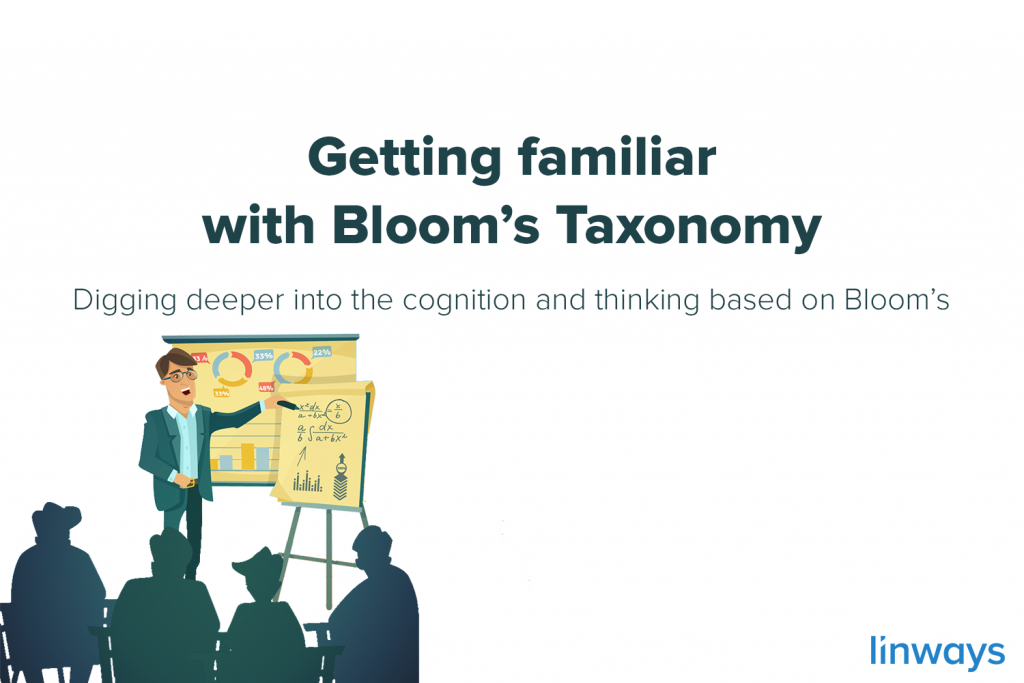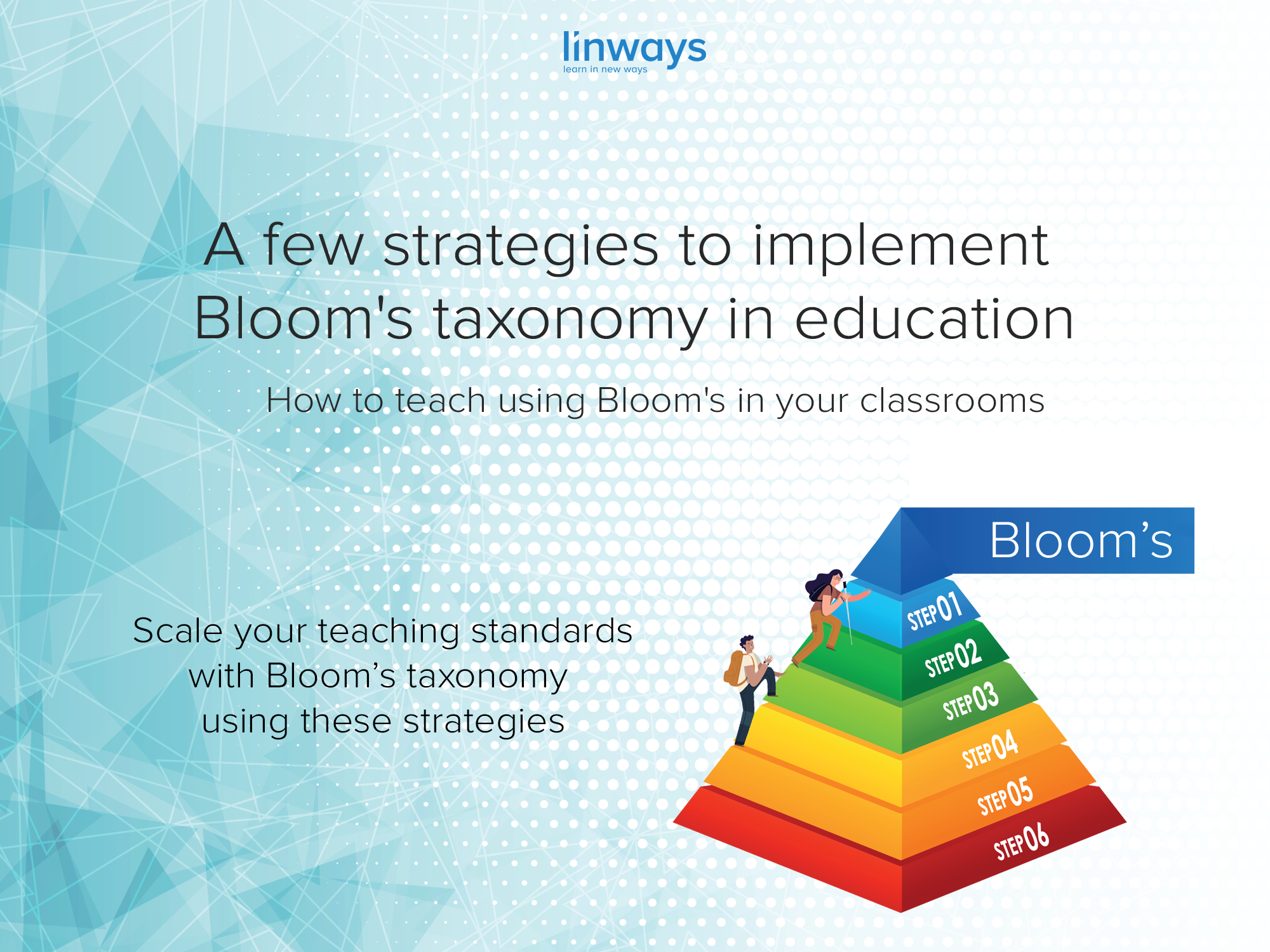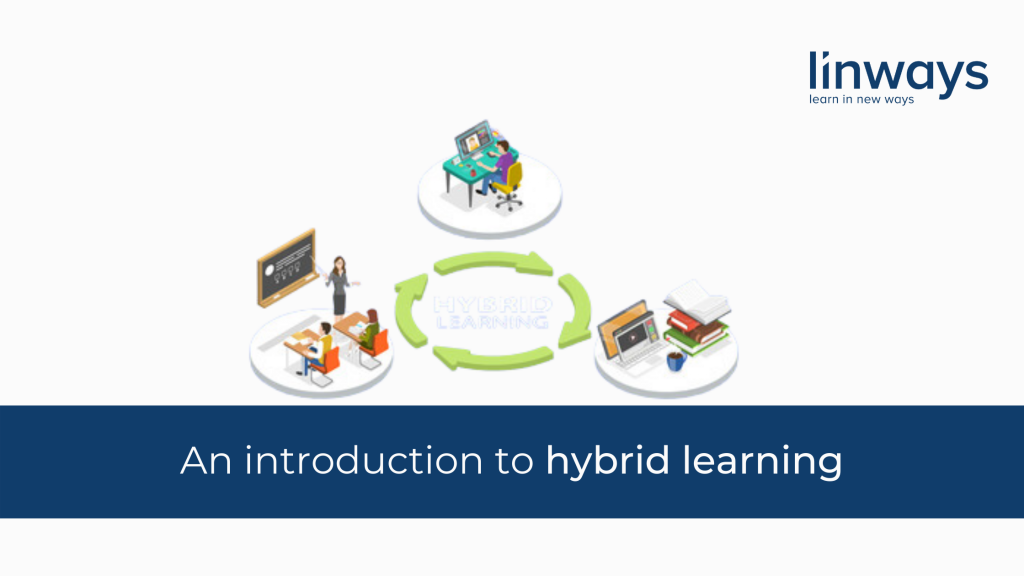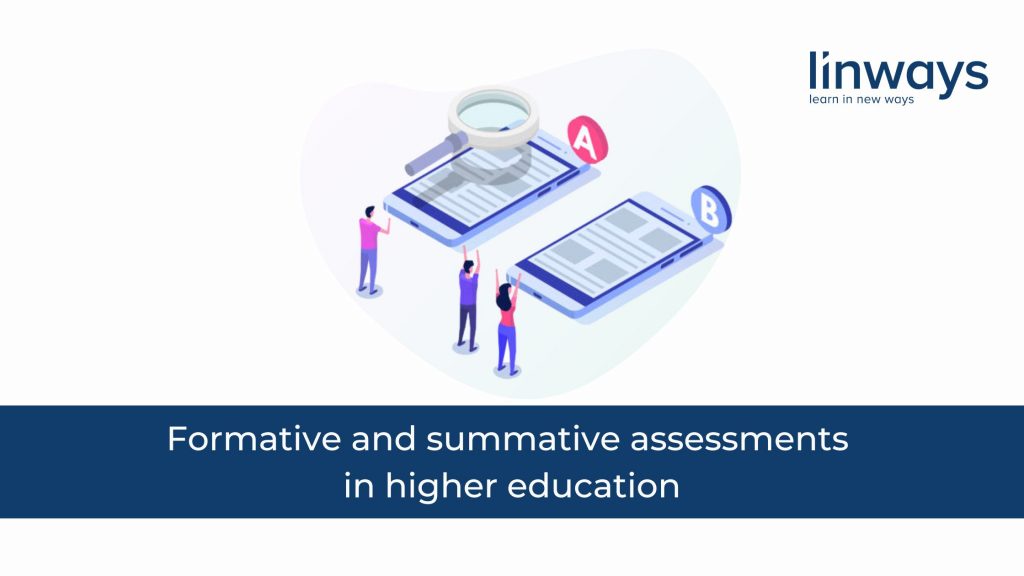What is Bloom’s taxonomy?
In simple words, Bloom’s taxonomy is a teaching methodology that revolves around 6 levels to measure achievement of learning outcomes. These six levels are:
- Remember
- Understand
- Apply
- Analyze
- Evaluate
- Create
These are mostly depicted as a pyramid of which the previously mentioned six levels represent each section of the pyramid. The student begins from the most basic level; remembering what has been taught, onto the higher levels as learning progresses. Each of these are mapped with measurable outcomes to assess attainment.
Bloom’s taxonomy is designed to address three domains of education and learning
Cognitive:Cognitive skills revolve around knowledge, comprehension and critical thinking. The more traditional forms of education like what we see in classrooms focuses on the cognitive skills.
Affective: This domain deals with how the learner reacts to what has been taught, and how they choose to interact with it. This covers the learner’s emotional and behavioural awareness and its development.
Psychomotor: As the name suggests, the psychomotor domain mainly addressed skill-based learning. Psychomotor objectives defines the ability and capability to process information to serve practical requirements. Usage of tools, application of theorems etc are placed under the psychomotor domain.
Origin of Bloom’s taxonomy
Benjamin Bloom developed the Bloom’s taxonomy during the 1940s, along with his collaborators Max Englehart, Edward Furst, Walter Hill and David Krathwohl. Their objective was to place educational goals into specific categories. The believed that classifying goals like this would be beneficial to assess college student performances better. Since then, Bloom and his colleagues revised and refined the framework several times before publishing the final version in 1956. It was published as the Taxonomy of Educational Objectives.
In 2001 the Bloom’s taxonomy was revised by putting together a series of more dynamic concepts for the classification system by a team of cognitive psychologists, curriculum theorists, instructional researchers and testing assessment specialists led by Lorin Anderson, a colleague of Krathwohl’s and former student of Bloom’s. The new model was based on the use of verbs to replace nouns—providing learners with clearer objectives for what is expected of them.
We will go over the six levels of cognition once and will get on to more details over each one of them in our upcoming blogs.
The 6 Levels of Bloom’s Taxonomy
1. The first level: Remember.
In this level, we assess the learner’s ability to retain and recall information. This usually includes testing the memory on terminology, facts, conventions, trends and sequences, classifications and categories, criteria, methodology, principles and generalisations, theories and structures etc. Though this is the most basic level, it is also a stepping stone or a foundation upon which the rest of the levels are built.
2. The second level: Understand.
The second level assesses the comprehension of the learner on the topic. Teachers can assess by asking for summaries, comparisons, deductions, descriptions etc. If the learner has understood the topic, they should be able to reproduce it in their own words. A students, while assessing this level, should ideally be able to remember and interpret information on their own which displays comprehension.
3. The third level: Apply.
As the name suggests, the third level deals with the student’s ability to handle and apply the information, techniques, and rules they’ve learned to resolve problems or get the desired results. The practical usage of their knowledge is assessed in this level. Teachers could make use of assessment techniques like activities, group projects, etc. to assess this level of cognition.
4. The fourth level: Analyze.
Here, students should be able to break down knowledge into it’s elementary modules to draw connections between ideas and utilize critical thinking. Upon reaching this level of Bloom’s taxonomy, the learner should demonstrate that they fully understand the topic as a whole, and as its component parts. You can also assess by making them draw diagrams or deconstruct thought processes.
5. The fifth level: Evaluate.
This is where the student themselves weigh the value of what they’ve learned. They should be able to infer, evaluate, separate based on pros and cons, and justify their choices upon making a decision. Teachers can assess qualities like the expression of opinions based on judgements and the authenticity of ideas or quality of work.
6. The sixth level: Create.
In this final level of Bloom’s taxonomy, the student should demonstrate a complete working knowledge by applying what they’ve learned, analyzed and evaluated, by building something, either tangible or conceptual. Projects, practical lab sessions, classroom activities etc. are usually used to assess attainment. The assessment could include detailed essays that draws from different parts of the subject or forming a whole concept or idea based on the topic.
As we move on, we will look more into information that you will need to build a bloom’s taxonomy framework for your students. We will discuss about strategies, misconceptions, common terminology used in bloom’s taxonomy framework etc. soon.
Why is Bloom’s taxonomy important

Bloom’s taxonomy is a widely popular instructional strategy across
the various levels of education. It’s used from K-12 to higher education
and has been around since 1956.
Bloom’s taxonomy revolves around learning outcomes. Teachers and
students are supposed to define certain outcomes or goals that the
students should be able to achieve at the end of education. The
structure of instruction is then built upon meeting the requirements and
achieving those outcomes. This gives a clear framework for assessments
so that the teacher can understand abilities and shortcoming of the
learner and provide necessary care.
The teacher can create lesson plans, define curriculum, and implement
strategies into their instructional models by leading the students
through 6 levels of cognition in Bloom’s, which we have seen earlier.
This also includes assessment tools, mapping the curriculum with the
outcomes etc to ensure that each level is sufficiently covered by the
student.
As for the students, the Bloom’s taxonomy draws distinction between
what they already know, what they are learning, and what they should
know at the end of the course. This helps them align with the teacher’s
intentions and adapt to changes in pace, depth, and modes in instruction
easily.
At the end of Bloom’s taxonomy is the belief that each student is
sufficiently proficient in the topic/subject, has learned ample
application skills, and has the ability to apply and dissect the concept
to suit the need of the situation. Teachers should also be able to
continuously evaluate these properties as the course moves through each
stages of the taxonomy framework.
Why do Bloom’s taxonomy have different levels and what do they mean
In education, it’s important to learn about the basics and work your
way up. Similarly, it is crucial to begin at the bottom level of
cognition and move higher as your education progresses. This is the
reason why Bloom’s taxonomy has different levels. While the lower levels
only requires less cognitive processing and give firm foundation to the
subject, the higher levels requires higher thinking and deeper learning
which can only be effective upon the foundation of the former.
How to exert the levels of thinking into your teaching
Make sure that you complete each level that you’re on before moving
on to the next one. When making lesson plans or course files, keep in
mind that how quickly you can introduce new concepts, when should you
reinforce them, and how to assess them.
The first stage of Bloom’s taxonomy, remember, is
about recalling and remembering information. The student can recreate,
duplicate, make a list of, memorize points etc. while in this level.
However, simply remembering things does not prove comprehension and you
should not leave things as they are at this level for final assessment.
Understand is the next level. Here, the learner
discusses and describes a topic, explains ideas and concepts, explains
what it means, recognizes it etc. Students can reinterpret information,
or compare and contrast information to display mastery in this level.
Once past this level, your students should move up the pyramid to the next stage; apply. Here, they use the information they’ve learned in new situations, be it to demonstrate an idea, or solve a problem etc.
The next step is to draw connections between ideas and concepts in the analyze level.
Break down knowledge into it’s elementary modules to draw connections
between ideas and utilize critical thinking. Upon reaching this level of
Bloom’s taxonomy, the learner should demonstrate that they fully
understand the topic as a whole, and as its component parts. You can
also assess by making them draw diagrams or deconstruct thought
processes.
In the evaluation stage, the student themselves weigh the value of what they’ve learned. They should be able to infer, evaluate, separate based on pros and cons, and justify their choices upon making a decision. Teachers can assess qualities like the expression of opinions based on judgements and the authenticity of ideas or quality of work. Appraising a situation, judging, arguing, supporting, defending, or critiquing, based on what they’ve learned till now comes to play in this level.
A few strategies to implement Bloom’s taxonomy in education
How to teach using Bloom’s in your classrooms

We saw some basics of Bloom’s taxonomy in the previous blog of this series. However, before turning into the theories, we figured that it would be more helpful for teachers and educators to have some idea about some strategies on successfully implementing Bloom’s taxonomy in education. This way, for those of you who are researching can still learn about the practical stages and teachers who are looking for ideas can use these methods to make use of these strategies to implement Bloom’s taxonomy in your classrooms.
Consider plotting assessments to the levels of Bloom’s taxonomy
As you go assessing your students and evaluating their performances, consider also giving points or grades to the levels themselves. This way, you can encourage students to move to the higher levels (Not that the lower level are “bad” or higher levels are “good”) of the pyramid with a sense of accomplishment.
The great thing about this strategy is that you can distribute the weight of execution with your students. This way, the Bloom’s taxonomy becomes everyone’s concern and your students will have something to measure up to instead of it being some complex computation and planning that only the teacher does.
Spending enough time on each levels for better coverage
Modern aspects and outlooks have convinced us that memorising is too conventional and has certain negative connotations in education. That’s not all true, we must say. Remembering things is a part of the learning process and it shouldn’t be overlooked. So even though memorising is the basic step in terms of Bloom’s, try spending enough time you need in making sure that your students remember everything.
Memorising things can relieve load off the student’s cognitive functioning because it doesn’t take much time to recall as much as to process, analyse, and implement theory into the information at hand. In fact, such an immediate access to the information can fasten the whole process and would only boost their ability to perform. So instead of barely brushing the lower levels and spending too much time on the higher levels, spend a definite amount of time on each of them so that your students have sufficient proficiency in each levels.
Make use of technology to improve cognition
We have talked about using technology in many of our previous blogs, but that’s only because it really matters. Teachers should start using technology more often and more wisely in their teaching learning to ensure proper progress and active participation. Communication platforms can be used to improve collaboration and encourage team efforts. Providing a space for the students to express themselves will help you to learn about their interests and about the results of your efforts.
Bloom’s taxonomy, though revered very effective by many experts from around the world, comes with more than enough data for a teacher to handle. There are outcomes, lesson planning, assessments, mapping, students information, performance reports, etc. and these may cause an overload in your daily routines. So try using academic management systems or learning management platforms to efficiently manage data.
Try project based learning
Project based learning is a great way to improve student engagement and cognition. It’s even greater while trying to implement Bloom’s taxonomy in your classroom. All projects can be broken down into each levels of the pyramid easily and this gives you, the teacher, a better mode of assessment. However, trying out project based learning in classrooms can be tricky if you don’t have clear points of advancement that measures progress. So place each steps of the project onto each levels of Bloom’s taxonomy pyramid.
Also published on Medium.




